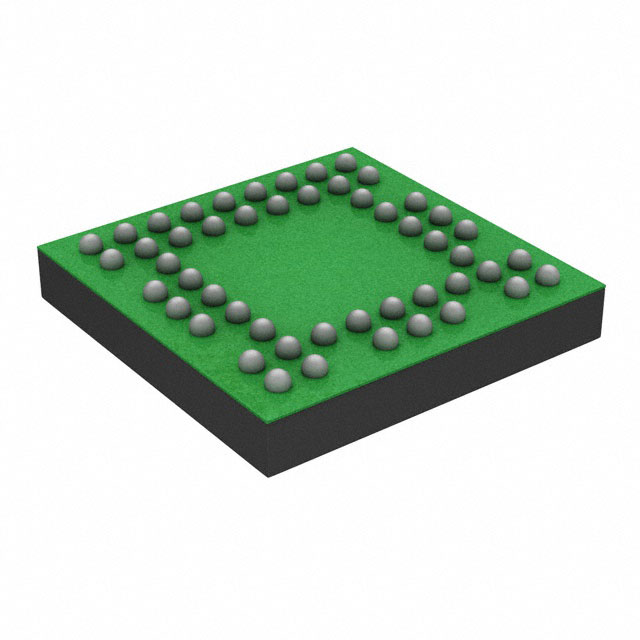HD3SS213ZQER
Basic Information Overview
- Category: Integrated Circuit (IC)
- Use: Signal Switch
- Characteristics: High-speed, Low-power, Bidirectional
- Package: QFN (Quad Flat No-Lead)
- Essence: Signal switching and routing
- Packaging/Quantity: Tape and Reel, 2500 units per reel
Specifications
- Supply Voltage: 1.8V - 3.3V
- Operating Temperature Range: -40°C to +85°C
- Data Rate: Up to 10 Gbps
- Number of Channels: 2
- Input/Output Impedance: 50 Ohms
- ESD Protection: ±8kV HBM, ±2kV CDM
Detailed Pin Configuration
The HD3SS213ZQER has a total of 20 pins. The pin configuration is as follows:
| Pin Number | Pin Name | Description | |------------|----------|-------------| | 1 | VCCA | Power supply for Channel A | | 2 | GND | Ground | | 3 | SDA | I2C Serial Data | | 4 | SCL | I2C Serial Clock | | 5 | EN | Enable Control | | 6 | OE | Output Enable Control | | 7 | A0 | Address Bit 0 | | 8 | A1 | Address Bit 1 | | 9 | A2 | Address Bit 2 | | 10 | VCCB | Power supply for Channel B | | 11 | GND | Ground | | 12 | RX0+ | Channel A Positive Differential Input | | 13 | RX0- | Channel A Negative Differential Input | | 14 | TX0+ | Channel A Positive Differential Output | | 15 | TX0- | Channel A Negative Differential Output | | 16 | RX1+ | Channel B Positive Differential Input | | 17 | RX1- | Channel B Negative Differential Input | | 18 | TX1+ | Channel B Positive Differential Output | | 19 | TX1- | Channel B Negative Differential Output | | 20 | GND | Ground |
Functional Features
- Bidirectional signal switching between two channels
- High-speed data transmission up to 10 Gbps
- Low power consumption for energy efficiency
- I2C interface for control and configuration
- ESD protection for enhanced reliability
Advantages and Disadvantages
Advantages: - High-speed data transfer capability - Low power consumption - Compact QFN package for space-saving designs - Robust ESD protection
Disadvantages: - Limited number of channels (2) - Requires external control via I2C interface
Working Principles
The HD3SS213ZQER is a bidirectional signal switch that allows the routing of high-speed data between two channels. It operates by selectively connecting the input signals from one channel to the output of the other channel, and vice versa. The switch is controlled through an I2C interface, enabling users to configure its behavior and select the desired channel routing.
Detailed Application Field Plans
The HD3SS213ZQER finds applications in various fields where high-speed signal switching is required. Some potential application areas include: - Data communication systems - Video and audio equipment - Test and measurement instruments - Industrial automation - Automotive electronics
Detailed and Complete Alternative Models
- HD3SS215: Similar functionality with additional channels
- HD3SS216: Higher data rate support with enhanced features
- HD3SS217: Lower power consumption variant for energy-efficient designs
Note: The above alternative models are suggestions and may not cover all available options in the market.
This entry provides a comprehensive overview of the HD3SS213ZQER, including its basic information, specifications, pin configuration, functional features, advantages and disadvantages, working principles, application field plans, and alternative models.
技術ソリューションにおける HD3SS213ZQER の適用に関連する 10 件の一般的な質問と回答をリストします。
Sure! Here are 10 common questions and answers related to the application of HD3SS213ZQER in technical solutions:
Question: What is HD3SS213ZQER?
Answer: HD3SS213ZQER is a high-speed differential switch that enables seamless switching between USB Type-C and DisplayPort signals.Question: What are the key features of HD3SS213ZQER?
Answer: The key features of HD3SS213ZQER include low power consumption, high bandwidth, support for USB Power Delivery, and compatibility with various protocols.Question: How can HD3SS213ZQER be used in technical solutions?
Answer: HD3SS213ZQER can be used in applications such as docking stations, USB hubs, monitors, laptops, and other devices that require USB Type-C and DisplayPort signal switching.Question: Does HD3SS213ZQER support USB 3.1 Gen 2?
Answer: Yes, HD3SS213ZQER supports USB 3.1 Gen 2, which allows for high-speed data transfer rates of up to 10 Gbps.Question: Can HD3SS213ZQER handle multiple lanes of DisplayPort signals?
Answer: Yes, HD3SS213ZQER can handle up to four lanes of DisplayPort signals, providing support for high-resolution displays.Question: Is HD3SS213ZQER compatible with Thunderbolt 3?
Answer: Yes, HD3SS213ZQER is compatible with Thunderbolt 3, making it suitable for Thunderbolt-enabled devices.Question: Does HD3SS213ZQER support USB Power Delivery?
Answer: Yes, HD3SS213ZQER supports USB Power Delivery, allowing for power negotiation and delivery over USB Type-C connections.Question: Can HD3SS213ZQER be used in both upstream and downstream applications?
Answer: Yes, HD3SS213ZQER can be used in both upstream and downstream applications, providing bidirectional signal switching capabilities.Question: What is the operating voltage range of HD3SS213ZQER?
Answer: The operating voltage range of HD3SS213ZQER is typically between 3.3V and 5V.Question: Are evaluation boards available for HD3SS213ZQER?
Answer: Yes, evaluation boards are available for HD3SS213ZQER, which can help in testing and prototyping the integration of this switch into technical solutions.
Please note that these answers are general and may vary depending on the specific implementation and requirements of your technical solution.


